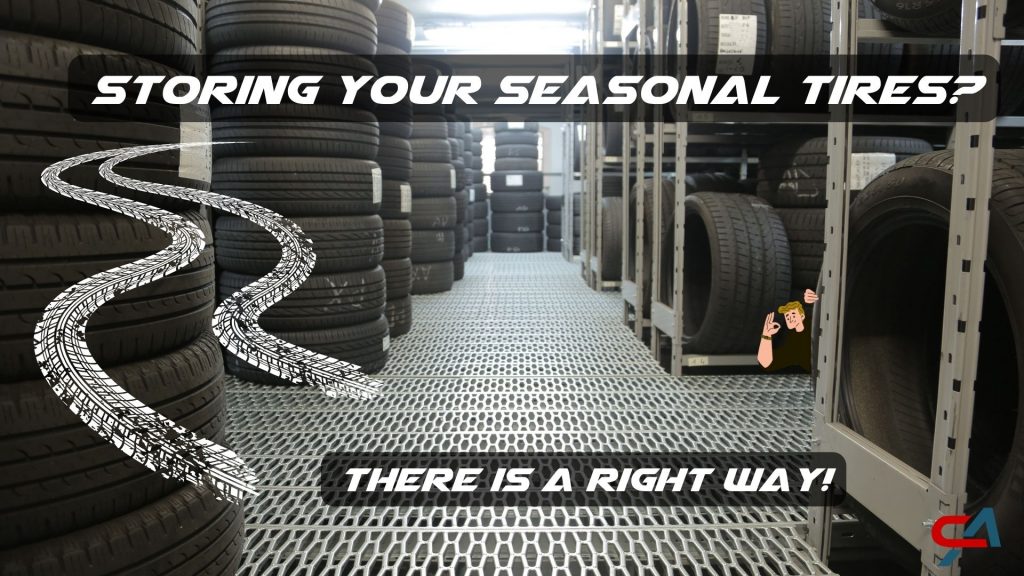Storing your seasonal tires – the right way
Understanding how to store tires properly is vital to preserving their longevity and performance, especially in Edmonton’s diverse weather conditions. Here’s a comprehensive guide on how to store tires effectively.
Ideal Storage Conditions for Tires
- Keep it Pristine and Dry: Choose a clean, dry, and well-aired storage area. Limiting air circulation is crucial, as it can hasten the rubber’s aging.
- Temperature Control: Tires fare best in mild, stable climates. A shaded or dark space is best to prevent damage from extreme temperatures and direct sunlight that can deteriorate the rubber.
- Elevate Your Tires: Position your tires off the floor to reduce exposure to moisture and protect them from debris or uneven surfaces.
What to Avoid
- Chemicals: Avoid contact with petroleum-based products and volatile solvents, as these can break down the rubber compounds in the tires.
- Ozone Producers: Equipment like electric motors, battery chargers, generators, and welding tools should be kept away from stored tires because they generate ozone, which can speed up tire degradation.
Guidelines for Outdoor Storage
Although indoor storage is recommended, if outdoor storage is your only option, consider these points:
- Elevation and Covering: Lift the tires off the ground and shield them from direct contact with heat-absorbing surfaces. Use an opaque, waterproof cover with ventilation openings to prevent moisture accumulation and the potential for overheating, known as the “heat box” or “steam bath” effect.
Storing Tires on a Vehicle
If you leave the tires on a parked vehicle:
- Park on a solid, clean, and dry surface.
- Ideally, remove the vehicle’s weight from the tires. If this isn’t possible, at least lessen the load.
- Keep the tires inflated to the recommended pressure, including the spare.
- If you are unable to lift the vehicle, reposition the vehicle every three months. This will help to prevent flat spots.
Before Reusing Stored Tires
Have a tire professional inspect the tires for any signs of damage, dryness, or foreign materials before remounting them. After confirming they are safe, inflate them to the proper pressure for optimal safety and performance.
If you need further assistance with tire storage or other vehicle maintenance, don’t hesitate to reach out!
Remember, during tire changeover season it’s a great idea to check your spare!

